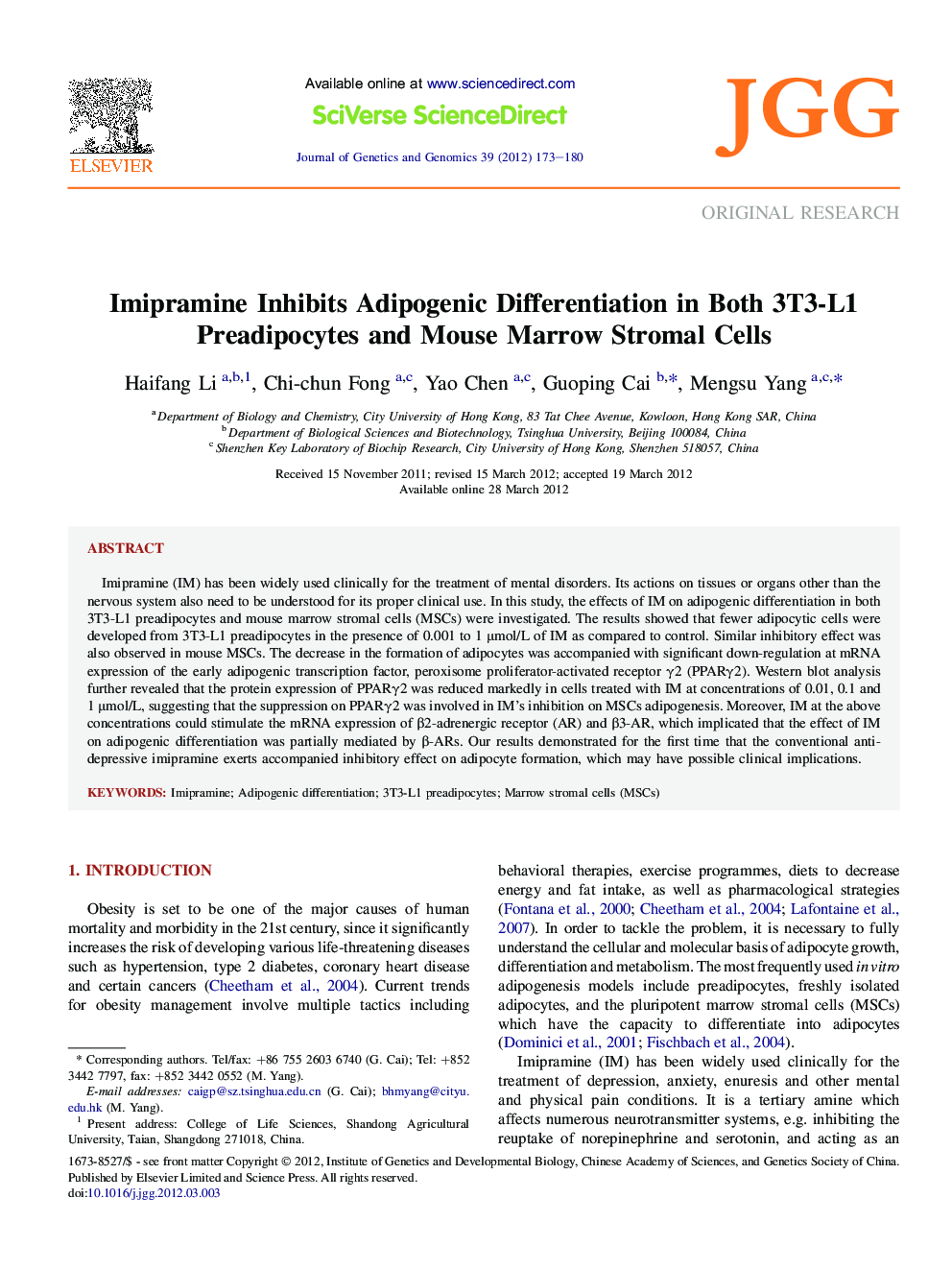| Article ID | Journal | Published Year | Pages | File Type |
|---|---|---|---|---|
| 2787831 | Journal of Genetics and Genomics | 2012 | 8 Pages |
Abstract
Imipramine (IM) has been widely used clinically for the treatment of mental disorders. Its actions on tissues or organs other than the nervous system also need to be understood for its proper clinical use. In this study, the effects of IM on adipogenic differentiation in both 3T3-L1 preadipocytes and mouse marrow stromal cells (MSCs) were investigated. The results showed that fewer adipocytic cells were developed from 3T3-L1 preadipocytes in the presence of 0.001 to 1 μmol/L of IM as compared to control. Similar inhibitory effect was also observed in mouse MSCs. The decrease in the formation of adipocytes was accompanied with significant down-regulation at mRNA expression of the early adipogenic transcription factor, peroxisome proliferator-activated receptor γ2 (PPARγ2). Western blot analysis further revealed that the protein expression of PPARγ2 was reduced markedly in cells treated with IM at concentrations of 0.01, 0.1 and 1 μmol/L, suggesting that the suppression on PPARγ2 was involved in IM's inhibition on MSCs adipogenesis. Moreover, IM at the above concentrations could stimulate the mRNA expression of β2-adrenergic receptor (AR) and β3-AR, which implicated that the effect of IM on adipogenic differentiation was partially mediated by β-ARs. Our results demonstrated for the first time that the conventional antidepressive imipramine exerts accompanied inhibitory effect on adipocyte formation, which may have possible clinical implications.
Related Topics
Life Sciences
Biochemistry, Genetics and Molecular Biology
Developmental Biology
Authors
Haifang Li, Chi-chun Fong, Yao Chen, Guoping Cai, Mengsu Yang,
